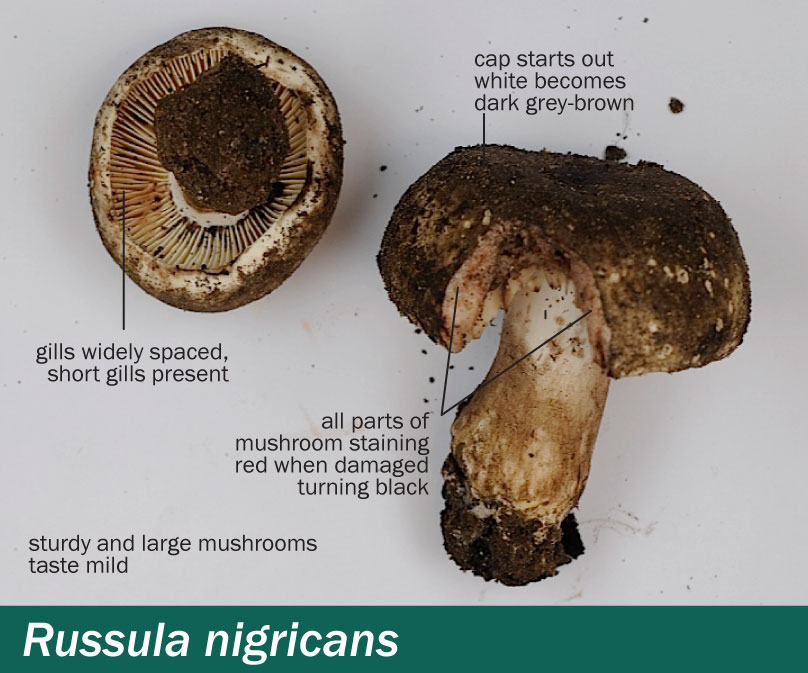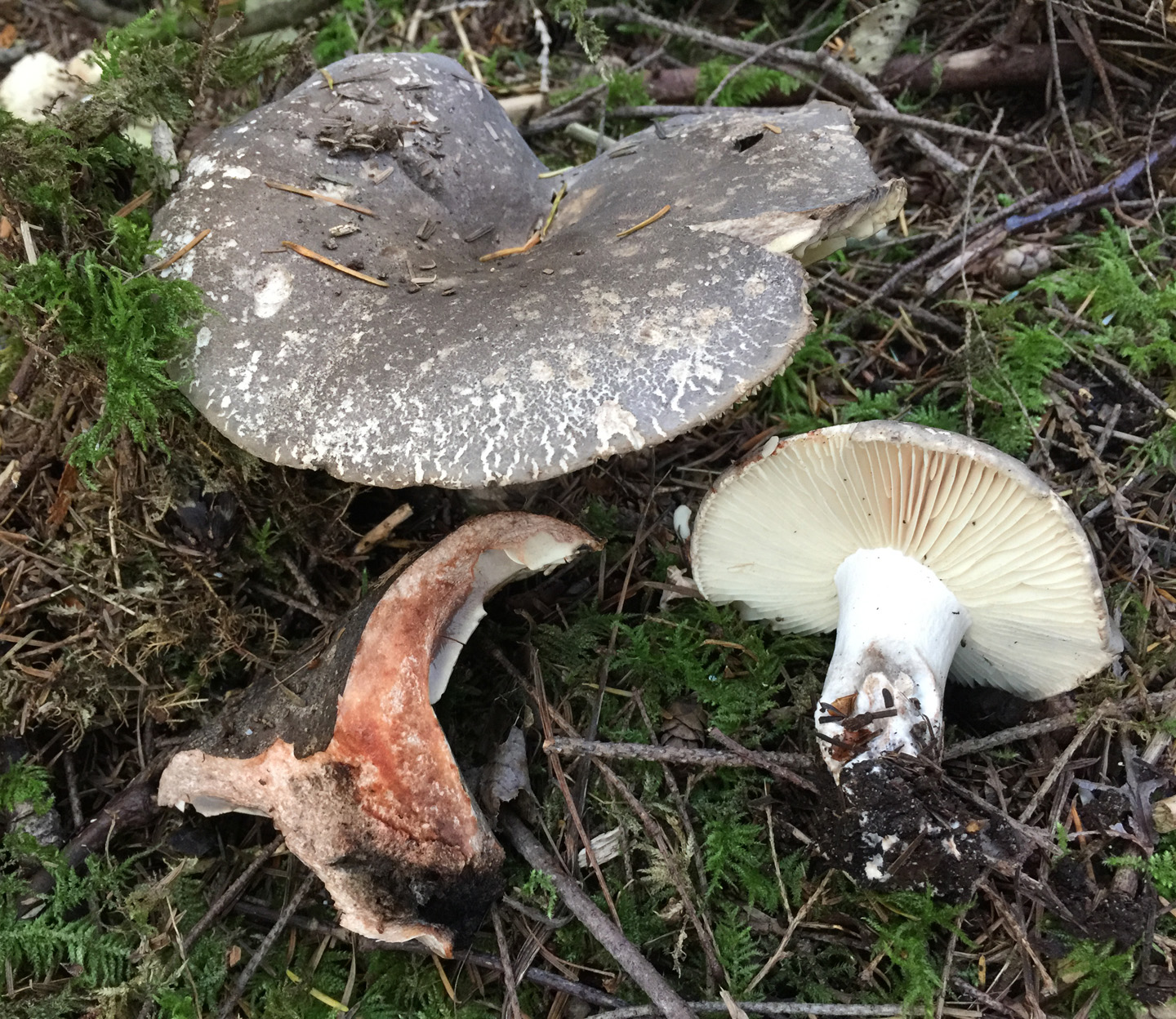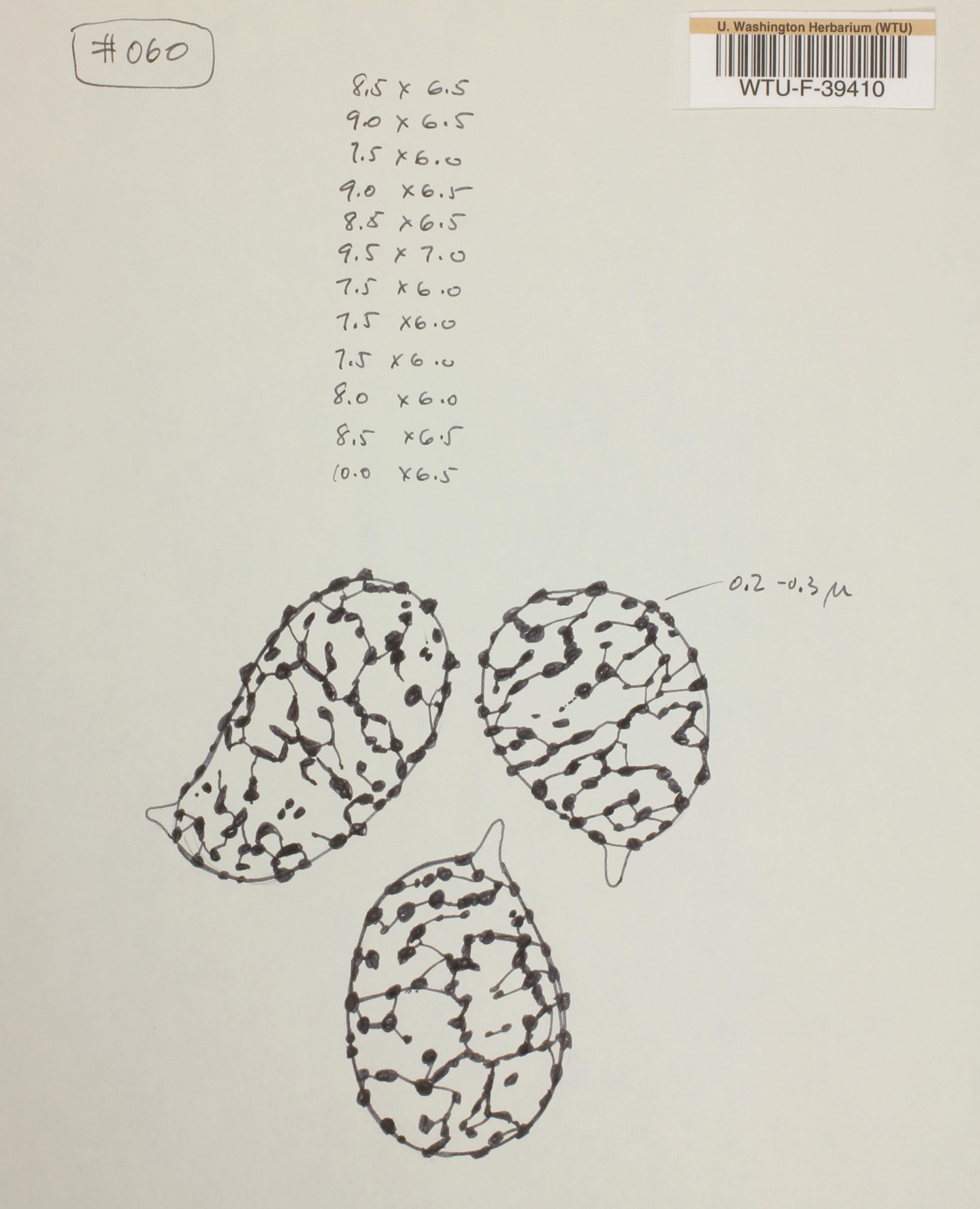Russula nigricans — Bloody blackening russula
Odour: Mild to unpleasant with age.
Taste: Mild.
Cap: 5–15 cm, rounded convex when young, later with central depression, but keeping the downward curved cap margin. Starting out whitish, it darkens to grey to grey-brown in patches, eventually becoming completely dark grey to black. The surface is dull, a little viscid in wet weather.
Gills: Thick and brittle, widely spaced, broadly attached to the cap. Short gills are present, in between the gills that go from the cap margin to the stem. The colour is cream at first, stains slowly red, and turns dark grey to black with age and damage.
Stem: 2–7 cm long x 1.5–5 cm wide, sturdy and cylindrical. The stem starts out white to cream, and changes via pale grey and grey-brown to dark grey or black with age.
Flesh: When cut, flesh in cap, gills and stem stains red and then turns dark grey.
Ring or veil: None.
Cup: None.
Spores: 6.5–8 x 5–7 µm, with warts and spines that are connected by a low network of ridges.
Habitat: On the ground in coniferous forests with pine (Pinus spp.), western hemlock (Tsuga heterophylla), Douglas fir (Pseudotsuga menziesii) and Sitka spruce (Picea sitchensis). Often partly buried in duff. Ectomycorrhizal.
Geographical distribution: Bloody blackening russulas in a broad, morphological sense are widely distributed across North America and Europe5,6. However, they constitute a species complex, and the individual species likely have narrower, as yet undefined, geographical ranges.
Treatment: Contact your regional Poison Control Centre if you or someone you know is ill after eating wild mushrooms. Poison Centres provide free, expert medical advice 24 hours a day, seven days a week. If possible, save the mushrooms or some of the leftover food containing the mushrooms to help confirm identification.
Poison Control:
British Columbia: 604-682-5050 or 1-800-567-8911.
United States (WA, OR, ID): 1-800-222-1222.



